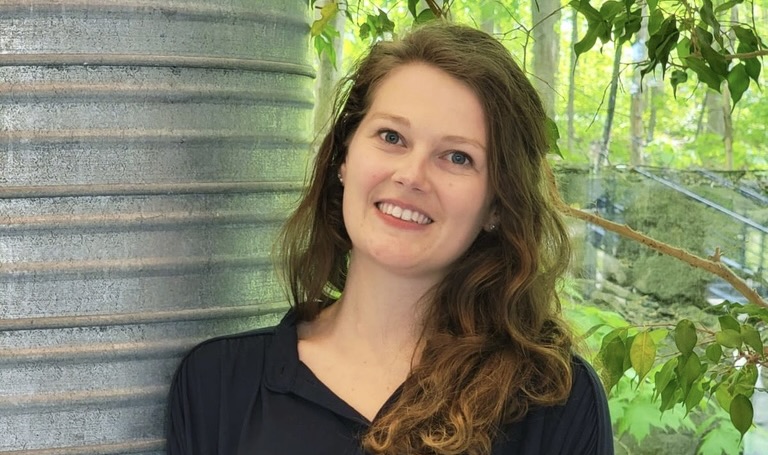The doctoral student Barbara Delacourt’s research project uses audiovisual materials to stimulate non-verbal communication in patients suffering from dementia.

Hugo Samson
For her doctoral research project, the speech therapist Barbara Delacourt, associated with the Centre de recherche de l’Institut universitaire de gériatrie de Montréal (CRIUGM), studies non-verbal communication in people living with dementia. A quite simple question structures her work: how can one continue to communicate without being able to speak?
Her research is part of the Lumière project, an initiative which arose out of the collaboration between CRIUGM and the cinEXmedia partnership. This project is developing a catalogue of materials to help stimulate non-verbal communication between persons with dementia and their caregiver families and friends. The project thus brings together people working in the fields of speech therapy and cinema studies to determine which factors in audiovisual materials provide the therapeutic effects sought.
From the Clinic to the Laboratory
Born in France, Barbara Delacourt studied speech therapy across the pond before continuing her practice in Quebec. “I spent a year working in a clinic, but I was very keen on doing research”, she explains.
And so she contacted Ana Inés Ansaldo, a full professor at the École d’orthophonie et d’audiologie at the Université de Montréal and director of teaching at the Institut universitaire de gériatrie de Montréal: “When I started a master’s degree under her supervision, I very quickly found it super stimulating”.
For her work on her master’s thesis, Delacourt joined the project COMPAs (Communication Proche Aidants [Caregiver Communication]), an app developed by CRIUGM which enables caregivers to create personalized libraries of audiovisual materials. “What I like about this kind of research”, she remarks, “is that you can help people even more than you can in a clinic. You can think about innovative ways to improve the quality of life of people who are ageing”.
Combating Injustice
Moreover, the reason Barbara Delacourt was attracted to the profession of speech therapist was first and foremost to help people for whom communication is difficult: “I have always been touched by adults, and particular the elderly, who live with speech disorders, and by the impact these disorders can have on their social relations. It is a true injustice and I want to combat it in my work”.
According to the Institut national de santé publique du Québec, 25% of Quebec’s population will be 65 years and older in 2030, which represents a leap of 5% over the proportion in 2021.
For the scientific community, the ageing of the population in Quebec and the rest of Canada also signifies an increase in the number of cases of neurocognitive disorders.
“As the population in Canada ages, we will continue to see increases in the number of people affected by dementia”, the Alzheimer Society of Canada writes in a 2024 report entitled The Many Faces of Dementia in Canada.
The challenges posed by dementia are considerable. In 2019, the Public Health Agency of Canada developed A Dementia Strategy for Canada, whose goal is to guide the care of persons suffering from dementia. In keeping with Barbara Delacourt’s goal in her research, the document sets as one objective to “engage people living with dementia and caregivers in the development of therapies”.
“The challenge we face”, Delacourt remarks, “is that as the illness progresses, these people have more and more difficulty in speaking and in understanding what is said to them. Those around them and even medical professionals often find themselves helpless. The person suffering from dementia, for their part, may withdraw. Basically, I would like to help people living with dementia retain a social connection with those around them.
“What I like about our project”, she adds, “is that it may be quite accessible. Once we have created our catalogue of videos, we can easily share it with patients everywhere. All they need is a screen”.
